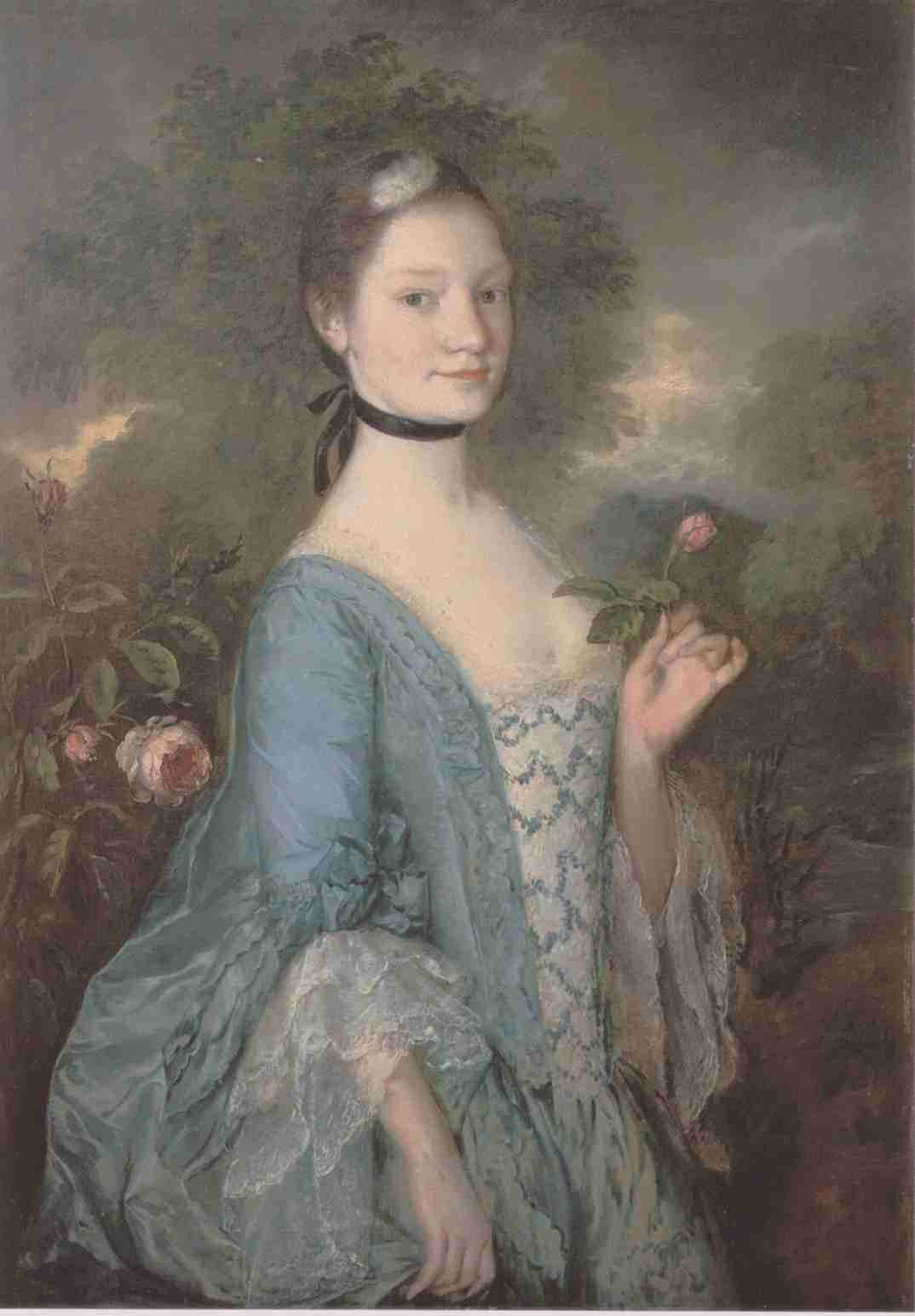Though she isn't Damaris Myddleton, she is the inspiration for her.
 I saw this portrait a few years ago in the Frick Gallery in New York. The picture was painted by Gainsborough at about the time of the Malloren novels, when he was still a young man, making his name in provincial Ipswich. The costume is exactly right for the time, with the elaborate gown and simple hair, and I was struck by her direct gaze and upright posture. She seemed alive to me, with a story to tell.
I saw this portrait a few years ago in the Frick Gallery in New York. The picture was painted by Gainsborough at about the time of the Malloren novels, when he was still a young man, making his name in provincial Ipswich. The costume is exactly right for the time, with the elaborate gown and simple hair, and I was struck by her direct gaze and upright posture. She seemed alive to me, with a story to tell.
As with most paintings, the full force cannot be appreciated in a reproduction.
Without knowing anything about Lady Innes, I felt the presence of a young lady who was not pretty, but carried herself with assurance, and perhaps even a little smugness when beneath, I sensed insecurity that could lead to misguided acts.
I had to find out more about young Lady Innes. Putting on my genealogical hat I found that Sarah Hodges, daughter of a wealthy merchant, married Sir William Innes on the 11th of November 1766 in Saint Matthew’s Church, Ipswich, Suffolk.
I assume she was the Sarah who was daughter of Thomas Hodges, born in Ipswich on the 25th May 1737. The portrait is dated 1757, so she would be 20 and still “Miss Hodges” at this point. She would have been 27 when she married.
Sir William Innes, 8th Baronet of Balveny and a Lieutenant Colonel in the army, was born in 1717, so he was twenty years Sarah's senior when they married. Was it a love match? Was Sarah happy to marry up from a merchant family to a gentry one, titled no less? Was she “on the shelf” and growing desperate?I haven’t been able to find out, but I did discover that Sarah died in 1770, leaving two daughters. Sir William married again and lived to 100!
That's not the sort of story suitable for one of my characters, but Sarah Hodges in her fine, fashionable dress, looking out at the world with a challenging, slightly tilted eyes, was the seed from which Damaris Myddleton grew.
Back to the site menu